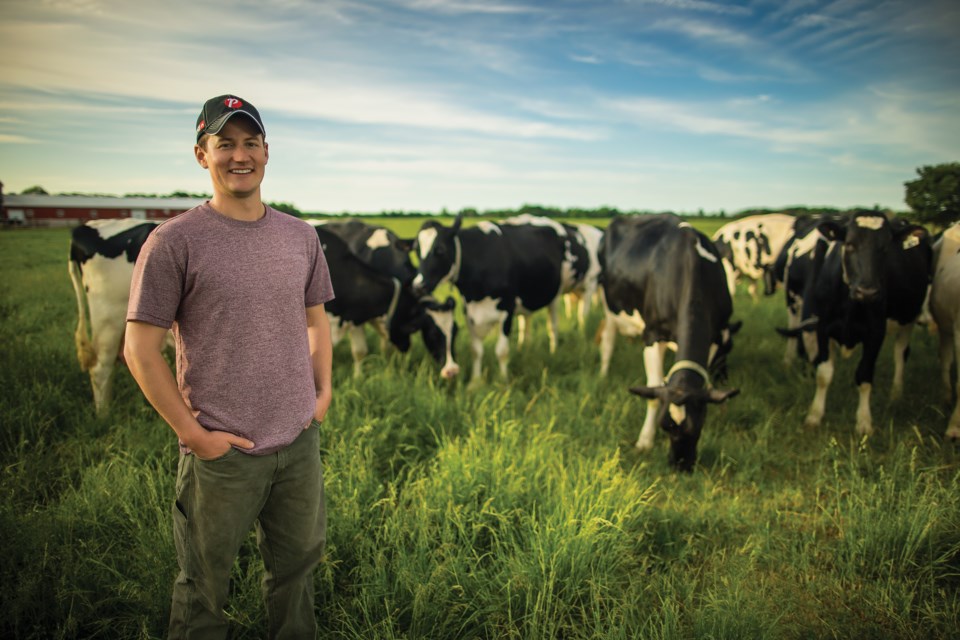Two significant communications initiatives have been unveiled in the past few days that will bring farming in Ontario and beyond to your phone or laptop – with great consistency, every week of the year.
The first is Strathroy-area dairy farmer Andrew Campbell’s 52-farms-in-52-weeks project. Even at the relatively young age of 31, Campbell already has a superb track record of bringing the farm to the e-world. He’s developed into one of the brightest lights in Ontario agriculture, and is a popular public speaker.
This year, he’ll combine his visits to various locales for speaking gigs with opportunities to meet farmers of all types, and assemble short videos about their work.
Campbell has a lot of credibility. Many people connected to agriculture through electronic media know him for his year-long 2015 e-project, #farm365, where he posted a photo or story daily about his own farm – the birth of a calf, planting a field, harvesting, etc.
Although the topics were ordinary farm activities, they reflected what people outside of agriculture wanted to know – which is, what’s it like where my food comes from?
During #farm365, Campbell was cyber-bullied by animal activists who didn’t like his profile or his modern farming practices. But he emerged stronger for it, and has since been identified by the farming sector as a champion for agricultural communications. Now he’s taking his commitment to explaining agriculture on the road.
The other initiative is from Guelph-based Grain Farmers of Ontario, who are embarking on a similar sounding public outreach campaign called 52 Weeks of Your Farmers. Like Campbell, they’ll highlight a different farmer every week on their Good In Every Grain website.
Their intent is to help close the gap in understanding between the non-farming public and farmers. Grain farmers have dealt with difficult issues over the past few years – particularly, their role in sustaining pollinators – and want to get their perspective out there.
“Much of the urban population has limited access to farming – we want to give everyone a chance to know farmers and feel comfortable reaching out to farmers when they have questions about how grains are grown, harvested, and used,” says Meghan Burke, communications manager for the organization.
Such efforts contribute to the overall effort by legitimate news sources — farmers and commodity groups, among them — to counter fake news. It’s been around since the Internet began, but hit a crescendo during the US presidential election and the so-called “post-truth” phenomenon, illustrated by then-candidate Donald Trump’s willingness to make things up and spit them out like they’re facts.
But the matter is much bigger than Trump. Our move towards Internet-based news and information has narrowed the scope of what we receive — because we can be so precise in filtering what we pick and choose. Although our choices widened with world wide web access, along with more contrary views we also gained access to more similar views.
Most of us naturally gravitate towards those we agree with, and towards those who agree with us. But that can reduce our exposure to other points of view that could challenge whatever wisdom is put before us. And that makes it easier for fake news to proliferate.
Fake news is countered with evidence. Balanced on-farm stories featuring interviews with real farmers making evidence-based decisions contribute to a better informed public.
Watch for more than 100 of these stories coming your way in 2017.
